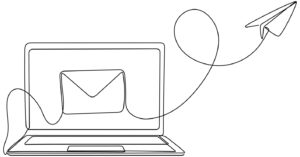How to use transitions for clearer writing
Lead your reader through it.

The first step many writers take when working on a piece is to create an outline.
Whether this is a formal affair with lots of Roman numerals or just a casual bulleted list, an outline is a great first step for organizing your thoughts before you start writing.
However, when you write off an outline, you might find that the story you wind up with still feels like an outline. Your piece might jerkily move from one point to the next without the connective tissue that makes a story cohesive and easy to follow.
That’s where transitions come in.
Transitions are guideposts for your readers. Transitions help readers understand where they’ve been and where they’re going.
It’s easy for writers to forget to leave these breadcrumbs. After all, you know where the story is going. You’re so deep into the forest that you can’t see the trees, let alone guide someone through them.
That’s when it’s time to take a breath, take a step back and build those signposts.
Here’s how to easily incorporate transitions into any piece you’re working on.
Reference what came before
One easy way to do this is to reference the preceding paragraph.
See what I did there? “This” refers back to the previous sentence, where we lay out what this section is going to do. Even though there’s a subhead separating them, the transition still ties the two sections together by reminding readers: That thing I said I was going to tell you? Here’s the first thing.
Simply nodding to what you’ve already written is the fastest and easiest way to get transitions involved.
Use time elements
Next, see if there’s an element of chronology to your story. Did one event occur after another? If so, that’s an easy way to tie thoughts together. Humans naturally think in terms of linear time, so simply letting readers know when things happened in relation to one another can help them grasp even disparate ideas.
You’re looking for words like “next,” “then,” “after,” “later,” “at the same time,” “meanwhile, “and so on.
Draw connections
Another idea is to turn to good old conjunctions. Words like “but,” “therefore,” “however,” “as a result” — you get the picture. These words exist to draw connections between ideas and events, and that’s exactly what you want with your transition.
Now, you might be crying out that you can’t begin a sentence with a conjunction. Despite what your third-grade English teacher said, you’re in the grammatical clear to start a sentence with these words. Even the dictionary says so.
Cheat
If you just aren’t feeling transitions, that’s OK. You don’t always have to write things in a traditional five-paragraph essay style. Mix up the format. Use bullet points or a numbered list — readers love them because they’re easy to scan and digest quickly, while writers love them because they’re faster to write without all these pesky transitions in there. You’re basically publishing a polished version of your outline, and the time savings can be big.
Of course, this won’t work with every piece of content you write, which is why it’s vital you master transitions. But before you decide on a format for your piece, take a moment to think about your audience and the purpose of the piece. Is this something that’s best created in an easy-to-read, mobile-friendly format? Or is it a deeper dive that requires a formal structure?
As always, put your audience first. Whether that’s through choosing the right form for your writing or including strong transitions to help them find their way through a piece, always keep in mind what’s best for your readers.
Allison Carter is executive editor of PR Daily. Follow her on Twitter or LinkedIn.








Structure one of the things that gets the least attention when it comes to persuasive writing. And nothing defines the structure like breadcrumbs. When readers can follow along easily, they can focus on the message rather than being distracted by “Wait, what?” and going back a line or two to pick up the story.